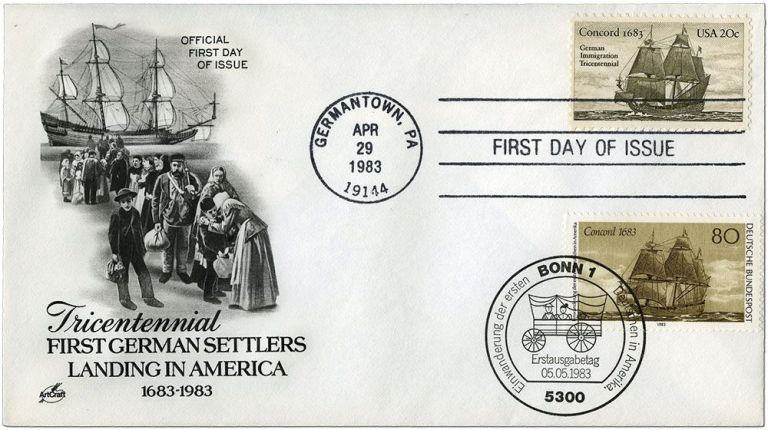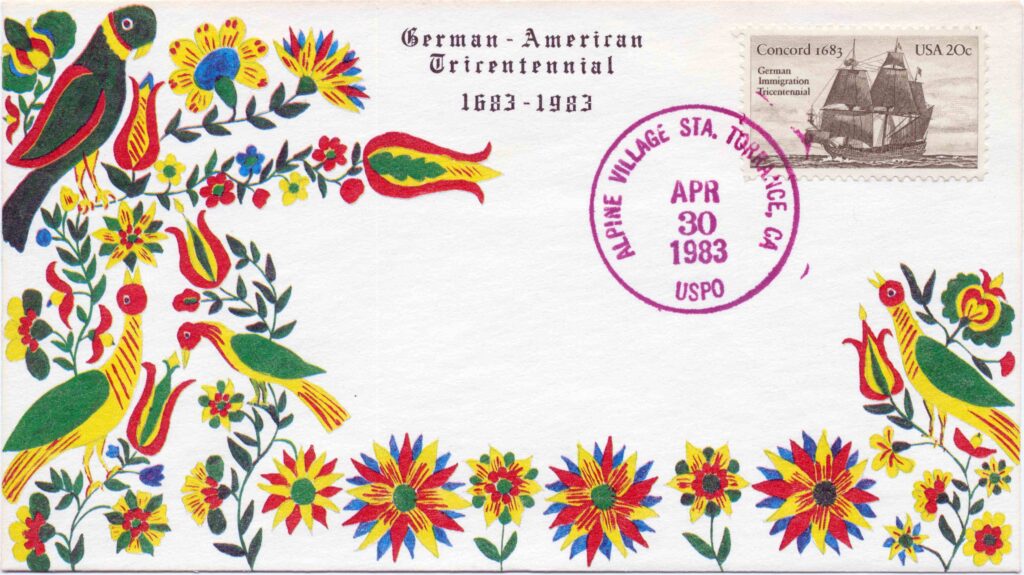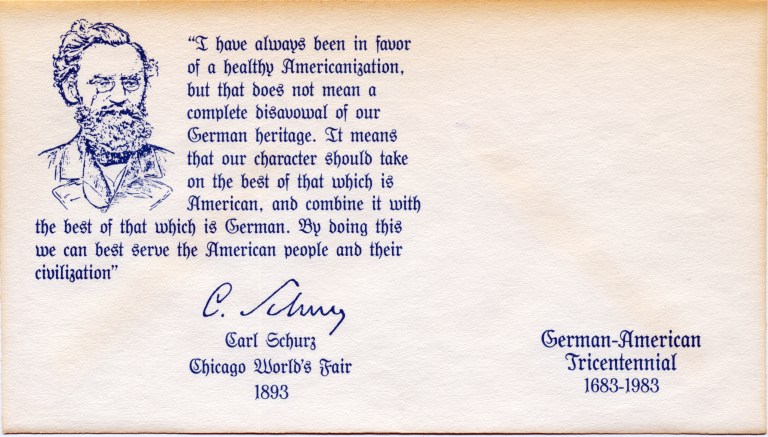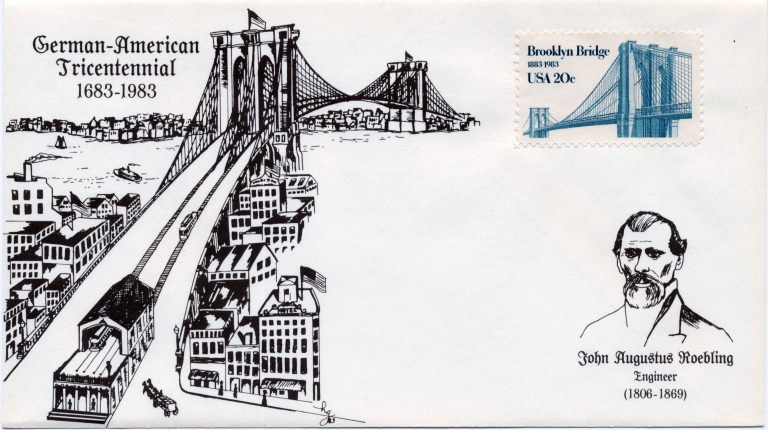13 Families from Germany

The “Concord” arrived on October 6, 1683, delivering the first 34 German Colonists, thirteen families from the town of Krefeld on the lower Rhine, to American shores. Francis Daniel Pastorius, the Krefeld families’ leader, accepted the offer of William Penn, who traveled to Germany in 1671, as the Quaker governor of Pennsylvania, to offer land and religious tolerance.

Acting as a land agent, Pastorius purchased from Penn 15,000 acres at 10 cent per acre. Pastorius embarked three months earlier than the Krefelders, to survey the land. With the aid of Benjamin Furly, the Krefelders embarked on the “Concord” and journeyed into history, as the first German group of immigrants and founders of Germantown, Pennsylvania.

The “Concord” was commemorated 1983, as a stamp, by the US and German Postal Services, to celebrate the German Immigration Tricentennial.
After 1683, the population of Germantown grew with German immigrants from 13 families to over 3000 people by 1790. In 1747, Pennsylvania’s Governor George Thomas estimated that three-fifths of the state total population of 200,000 was German.
The German immigrants brought to this country their culture, their beliefs, their skills, crafts and art. The Pennsylvanian Germans with their Old World good penmanship created a rich heritage of pen illustrated art. The pen style “Vorschrift, “for penmanship examples, were the schoolmaster copy sheet. To capture a schoolmaster pupils’ attention, many, of the “Vorschrifts” (regulations) were highly decorated with, flowers and allegorical birds, called “Distelfink.”
The Tricentennial Foundation created a commemorative Pennsylvanian German Folk art style envelope to display the “Concord Stamp” and to remind us, that for over three hundred years, it was the will and the skills of the German Immigrants that helped build America.
Another Envelope was created by the Tricentennal Foundation for Carl Christian Schurz who was born on March 2, 1829 – Died on May 14, 1906 and was a German revolutionary, American statesman and reformer, U.S. Minister to Spain, Union Army General in the American Civil War, U.S. Senator, and Secretary of the Interior. He was also an accomplished journalist, newspaper editor and orator, who in 1869 became the first German-born American elected to the United States Senate.

The Tricentennial Foundation also created an envelope to honor the German engineer who built the Brooklyn Bridge: John Augustus Roebling (born Johann August Röbling; June 12, 1806 – July 22, 1869) was a German-born American civil engineer. He designed and built wire rope suspension bridges, in particular the Brooklyn Bridge, which has been designated as a National Historic Landmark and a National Historic Civil Engineering Landmark.
